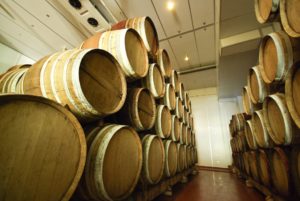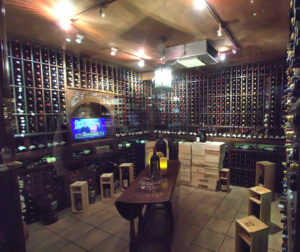

Sometimes we worry about the wine industry. When we started writing a column in the mid 1980s, there were a lot of family owned wineries – small, dedicated operations that were absorbed by conglomerates such as Gallo, Kendall-Jackson, and Constellation. Exceptional producers who crafted such great wines – Inglenook, Franciscan, Charles Krug – are either gone or shadows of their former selves.
The “so what” of this metamorphosis is a homogenization of wine styles. Chardonnays, merlots, cabernet sauvignons taste the same – well-made but hardly crafted without regard to profit. Worse among the trend is the rapid growth of producers who own no vineyards or wine-making facilities. They buy their grapes, make a trendy wine at crushing facilities and slap on a clever label. David Phinney, for instance, is making millions creating brands like Orin Swift and The Prisoner, then selling them to Gallo and Constellation who double production and rake in millions more.
But what isn’t there to admire about an entrepreneur who creates a popular wine and makes a boatload of money?

One recent day we had breakfast with Dan Cohn of Bellacosa and later in the day we had a tasting of Priest Ranch wines with its winemaker Craig Becker. Both have managed to stay free of this wacky trend of making lots of money from sweet red wines with gimmicky names.
Becker said he thought wine producers were just “casting a wide net to attract customers. I hope they grow out of it. We like to be at ground level.”

Bellacosa’s Cohn said he grew up with cabernet sauvignon in his blood. He worked for years on his father’s winery, B.R. Cohn, before launching Bellacosa after his father sold the property in 2015. B.R. Cohn’s cabernets were traditional, dry and complex. Bellacosa sold out of its first vintage in 10 months. His cabernet sauvignon cost $25; Priest Ranch’s regular cabernet sauvignon sells for $38 – prices that are less attractive than the $8 charged by Apothic Red and Menage e Trois.
Cohn says he tasted Meiomi pinot noir, blended with riesling and perhaps syrah, and says, “That’s not pinot noir.”

Don’t get us wrong. We’re not condemning sweet wines, but we like them in the form of sauternes, port, or dessert wines served after a meal. Sweet wines paired with food often perform terribly because they lack the acidity needed to offset seasoned food.
If you like Apothic, Ménage è Trois – the current top selling red wines – then drink on. The price is right and these wines go down like Mountain Dew. We’re happy that you are enjoying wine as much as us and have found wines that fit your budget. For us, though, we prefer the traditional wines that laid the foundation for the industry and hopefully for its future.
WINE PICKS
-
Beronia Crianza 2015 Beronia Crianza 2015 ($15). This Rioja blend of tempranillo, garnacha and mazuelo is a great value. Herbal aromas with cherry and blueberry notes with a hint of vanilla and chocolate from the American oak.
- Steele Durell Vineyard Chardonnay 2017 ($36). Using grapes from the northern end of Carneros, Steele has a terrific, well balanced chardonnay with orange zest aromas. Pear and tropical fruit flavors. Aged 12 months in oak barrels, it has hints of vanilla and caramel.
- Trinity Hill Gimblett Gravels Syrah 2015 ($30). We were impressed with this New Zealand syrah right out of the glass. Effusive blueberry and licorice aromas with complex and layered fruit flavors of dark berries. Long in the finish and firm tannins. Well worth the price.













